A fiber optic connector works to terminate the end of an optical fiber, as the name indicates, it is generally adopted to join optical fibers where a connect or disconnect capability is required. The connector mechanically couples and aligns the cores of fibers to enable light passing from one fiber to another. Thus it provides much more convenience and flexibility to operators with a connecting speed quicker than fiber splicing. Fiber optic connector is widely employed in the telephone company central office, at installations on customer premises and in outside plant applications to connect equipment and cables. Besides, it also captures an essential position when cross-connect cables are required. As an indispensable component in cable installation that can affect the performance and reliability of the whole system, the cleanliness of fiber optic connector cannot be ignored. This article aims to raise the awareness of connector cleaning and offer some constructive suggestions to clean fiber optic connector.
Why It Is Critical to Ensure Fiber Connector Cleaning
It is important to know the fact that every fiber optic connector should be inspected and cleaned before mating, because a clean fiber optic connector is a necessary requirement for quality connections between fiber optic equipment. And One of the most basic and important procedures for the maintenance of fiber optic systems is to clean the fiber optic equipment. However, any contamination in the fiber connection can cause failure of the component itself, or even worse, failure of the whole system.
In addition, even microscopic dust particles can cause various problems for optical connections. A particle that blocks the core, either partially or completely, could generate strong back reflections, which can cause instability in the laser system. Dust particles trapped between two fiber faces can scratch the glass surfaces. Even if a particle is only situated on the cladding or the edge of the endface, it can cause an air gap or misalignment between the fiber cores which significantly degrades the optical signal. Besides dust, there still exists other kinds of contamination such as oil, human touch, film residues, vapors in the air and so on, which are proved to be more difficult to remove than dust particles. If not removed properly, they may also result in great damage to equipment.
Contaminated fiber optic connectors can often lead to degraded performance and costly, but preventable failures. So, to ensure proper performance and reliability, care must be taken with the installation and maintenance of fiber connectors. Cabling industry best practices recommend that both field and pre-terminated connections should be inspected and cleaned prior to mating to other connectors or equipment.
Common Contamination Conditions of Fiber Connector
In this part, this article intends to show several common contamination conditions of fiber connector through the following picture:
Figure 1 shows a clean single mode ceramic endface.
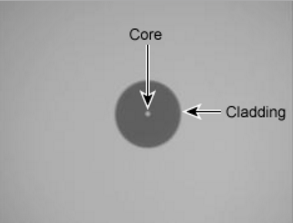
Figure 1
Figure 2 shows a connector with dust particles spread across the surface of the endface that needs cleaning.
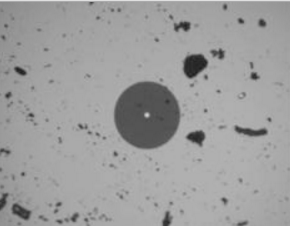
Figure 2
Figure 3 shows a connector with liquid contamination that needs cleaning.
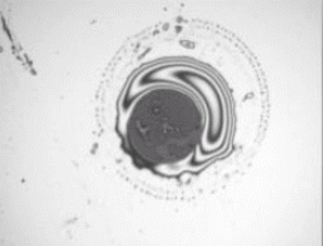
Figure 3
Figure 4 shows a connector with alcohol residue that needs cleaning.
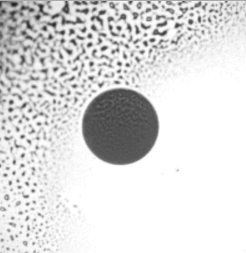
Figure 4
Figure 5 shows a connector with a dry residue that needs cleaning.
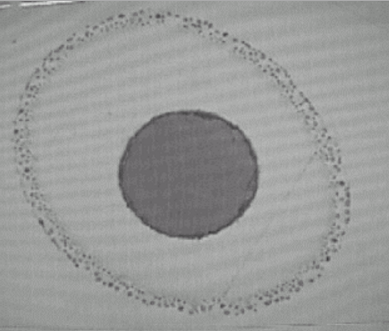
Figure 5
Figure 6 shows a connector with an oil residue that needs cleaning.
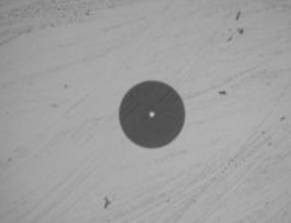
Figure 6
The Methods of Fiber Connector Cleaning
Based on the cleaning method, generally there are four types of fiber optic cleaning kit on the market nowadays:
Dry cleaning: Optic cleaning without the use of any solvent.Wet cleaning: Optic cleaning with a solvent. Typically IPA (isopropyl alcohol). Non-Abrasive cleaning: Cleaning without abrasive material touching the fiber optic connector end face. Examples are air dusters or pressured solvent jet used in automated in-situ connector cleaners.
Abrasive cleaning: The popular lint free wipes, reel based fiber connector cleaners and optic cleaning swabs such as the sticks are all abrasive cleaning types.
The Process of Fiber Connector Cleaning
In this part, let’s move to describe the connector cleaning process. For general fiber optic connector cleaning, it is necessary for you to complete the following steps:
- Step 1: Clean the fiber optic connectors with a dry cleaning technique.
- Step 2: Inspect the connector.
- Step 3: If the connector is dirty, repeat the dry cleaning technique and inspect the connector again.
- Step 4: Clean the connector with a wet cleaning technique if it’s still dirty.
- Step 5: Inspect the connector again.
- Step 6: Repeat these steps until the connector is clean.
If you are using resealable containers, you should store the end caps in separate containers and store all of the cleaning tools as well. The inside of the containers should be clean and the lid should be kept tight to avoid contamination. Do not allow the cleaning alcohol to evaporate slowly. This may leave a residue on the cladding or fiber core. It is often difficult to clean and can be more difficult to remove than the original contaminant.
Conclusion
As the demand for increased bandwidth, more data and better quality audio/video grows rapidly, the use of fiber optics around the globe has increased greatly. That need for more and better data means more fiber optic cable and more high density, reliable optical connectors. It is thus nature that cleaning consideration is the number one issue in fiber optic cable technology today, with the proper method and process implemented in connector cleaning, the fiber optic connector will perform flawlessly for years in your fiber cable infrastructure. FS.COM provides cost-efficient and high-quality fiber optic cleaners that ensure you high-performed fiber connector cleaning. Supported by large quantities of products in stock, you can enjoy really fast delivery in FS.COM. For more detailed information, please visit www.fs.com or contact sales@fs.com.

No comments:
Post a Comment